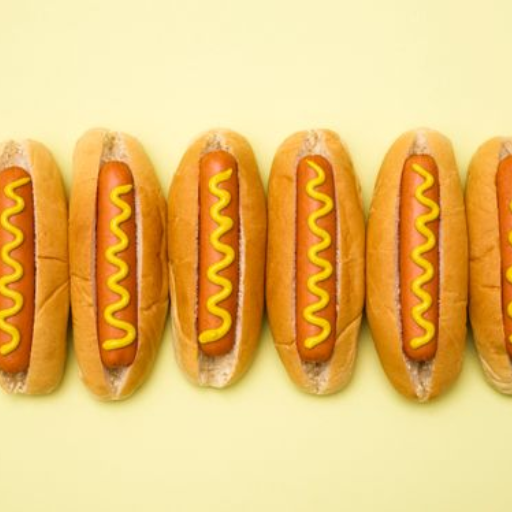
Children love hot dogs, and many parents choose to feed them this food because it is easy to prepare, but at the same time, hot dogs cause problems for pediatricians. They consider it a potential endorsement of choking. This hot dog article highlights the different aspects of the choking hazards of hot dogs with respect to the input from pediatricians who understand the issue of risk factors better than anyone else. In the process of doing this, we will also be looking at anatomical and maturity-related factors that put children at risk when eating hot dogs, and of those, we will look at how preventative measures such as proper supervision can reduce the risk of exposure to hot dogs as well as the choking risk posed by them. These risks are important as they help define the focus of attention and the limits of commonly adopted solutions for the safe and healthy development of the child, a fact that causes quite a number of parents’ concerns.


 But if a child, imagine a child chokes on a hot dog for whatever reason, the first key aspect that should be maintained is calmness along with speed of action. I, being an industry expert, would recommend the following steps in this case.
But if a child, imagine a child chokes on a hot dog for whatever reason, the first key aspect that should be maintained is calmness along with speed of action. I, being an industry expert, would recommend the following steps in this case.
 Other caregivers to refrain from handling specific foods that could cause choking, among other hazards, to toddlers. Whole grapes, nuts, popcorn, hard candy, raw carrots, as well as large chunks of meat or cheese are some of the foods that are highlighted as discouraged for consumption. Such foods tend to be quite hard for toddlers to chew and swallow in a safe manner, which increases the danger that their airways may get blocked. Furthermore, it is also best to apply peanut butter in thin layers so the child’s mouth does not get filled with this paste, which could lead to choking. As a rule of thumb, always ensure that you do not serve food that is of inappropriate texture or size unless absolutely necessary for young children, this can be done by cutting the food into tiny pieces which do not pose a risk to the child.
Other caregivers to refrain from handling specific foods that could cause choking, among other hazards, to toddlers. Whole grapes, nuts, popcorn, hard candy, raw carrots, as well as large chunks of meat or cheese are some of the foods that are highlighted as discouraged for consumption. Such foods tend to be quite hard for toddlers to chew and swallow in a safe manner, which increases the danger that their airways may get blocked. Furthermore, it is also best to apply peanut butter in thin layers so the child’s mouth does not get filled with this paste, which could lead to choking. As a rule of thumb, always ensure that you do not serve food that is of inappropriate texture or size unless absolutely necessary for young children, this can be done by cutting the food into tiny pieces which do not pose a risk to the child.
 Being an industry expert, teaching children to eat a hot dog effectively requires several important steps. The first step is to always cut a hot dog into small thin slices. A hot dog is to be cut almost in a crosswise manner into halves or quarters to lessen the choking risk. The children should also be involved in this procedure, and the reasons for these safety aspects should be explained to them so that they can understand and cooperate willingly. Try to make them take their time chewing each piece slowly instead of swallowing it immediately, on the premise that they do not eat too fast. A calm and quiet setting during mealtime minimizes undue stimulation and ensures that the children pay more attention to eating and doing so without any hazards. Besides, the elderly should always be around the children when they are eating to eliminate any risk of choking.
Being an industry expert, teaching children to eat a hot dog effectively requires several important steps. The first step is to always cut a hot dog into small thin slices. A hot dog is to be cut almost in a crosswise manner into halves or quarters to lessen the choking risk. The children should also be involved in this procedure, and the reasons for these safety aspects should be explained to them so that they can understand and cooperate willingly. Try to make them take their time chewing each piece slowly instead of swallowing it immediately, on the premise that they do not eat too fast. A calm and quiet setting during mealtime minimizes undue stimulation and ensures that the children pay more attention to eating and doing so without any hazards. Besides, the elderly should always be around the children when they are eating to eliminate any risk of choking.
Why Are Hot Dogs Considered a Choking Hazard?

Hot dogs are considered a choking hazard primarily due to their size, shape, and consistency, which align closely with the dimensions of a young child's airway. Their cylindrical and compressible nature makes them likely to conform to the throat, posing a high risk of airway obstruction, especially for children under the age of three. The lack of adequate molar teeth in young children further exacerbates this risk, as kids may bite off large chunks they cannot adequately chew. Thus, pediatric recommendations urge slicing hot dogs lengthwise and into small pieces to reduce the likelihood of choking.
Shape and Texture of Hot Dogs Make Them Dangerous for Young Children
I appreciate the fact that the structural forms and chemical constituents of every food product have a different risk threshold with respect to ingestion – in fact, foods such as hot dogs are among the most dangerous for children due to the combination of their cylindrical structure and playful shape. Since such a shape appears to be congruent with the transverse diameter of a child’s esophagus, the risk of swallowing a piece elevates the risk of choking to an even higher degree. Furthermore, the soft, humidified membranes surrounding a hot dog can make it much more difficult to grab onto a chunk of it once it has been chewed. By my observations and school of thought from other pediatric safety experts, we are able to record such strong opinions that the only possible way to tackle this threat is to focus on hazard analysis while preparing the food. I further support the cause that industries must introduce better policies as well, such as allowing hot dogs to be cut into smaller pieces for children to help minimize the risk of choking.How the Perfect Plug Can Block the Airway
Let’s put our thinking caps on as we examine the impact of a hot dog and its potentially life-threatening effect as an obstruction. What I mean by that is the horrifying picture created by the idea of a hot dog lying in an airway. Just the thought of looking at it lying there, dirtied, makes me sick, get it? The phrasing sounds quite vivid. So, let’s get straight to the point: it might get more disgusting. This is all that is required to prevent a hot dog from being crystallized, or at least from wilting, unfortunately.- Size and Shape: Geometry dictates that the crosssectional area occupied by a hot dog is very close to the cross sectional area of a young child’s windpipe, which might be visualized as having round stuffed cylindrical objects packed inside the same shaped hollow pipe of the same size. This likeness optimally puts the chances of blockage via aspiration into very dire circumstances.
- Texture and Compression: Hot dogs have a soft and pliable body which implies that while still inside the mouth, hot dogs become deformed and adapt to the shape of the pharynx and the trachea when fledged out. This quality renders it easier for the airway to get blocked because hot dogs can be harder to dislodge compared to tougher food particles which do not adhere so tightly to the lining of the airway.
- Lack of Effective Mastication: Hot dogs are soft and pliable in nature hence when trying to compress them with the molars not mature enough, children can more often than not tend to engulf large pieces enabling them to swallow catch hold of their trachea. This aspect of a child makes scenarios frighteningly easy for a decent blockage of the airways to take place.
- Inadequate Cough Reflex: The cough reflex which as most would agree aids in dislodging and getting rid of ares which should not be in the throat is still in its developing stage in most kids between the age of 2 and 5. Because of not having full functional deformation and muscle growth in that area the kids find it hard to expel hot dogs out of their trachea.
Insights from the American Academy of Pediatrics on Food-Related Choking
The institution dedicated to children’s health in the USA, known as the American Academy of Pediatrics, addresses the reasons for recommending restricted diets for infanthood, noting that there are, among others, hot dogs. In answer to the question, here is a synthesis of the salient parameters and recommendations:- Size and Shape Concerns: It is worth noting that the size and shape of hot dogs are anatomically dangerous because it is very similar to a child’s airway. Grapes, some popcorn, and even some nuts are also on the list of choking hazards. Each of them has some physical properties which very much increase the risk of an airway blockage.
- Texture and Composition: Hot dogs are classed as soft, smooth, and compressible, and as such, can be a major choking hazard. They can expect the coarser and thicker foods to collapse into the shape of the air passage,e while the softer ones can leave some crashing chances. Because of this, feeding children requires modifying the size and texture of the food so that the child will not choke.
- Potential for Improper Chewing: Y Children who are not entirely versed with a set of molars have the chance of chewing food inadequately. Dense foods that are chewy will require more chewing and, therefore, should be eaten more slowly. Controlled bites that are smaller but easier to chew should be prescribed.
- Cough Reflex Development: The cough reflex is one that makes the airway clear, but there are children who are at a young age who do not possess such a reflex which aids in clearing the airway. It is because of this that when children with this condition try to cough they are often ineffective in their efforts.
How to Cut Hot Dogs to Reduce the Choking Risk
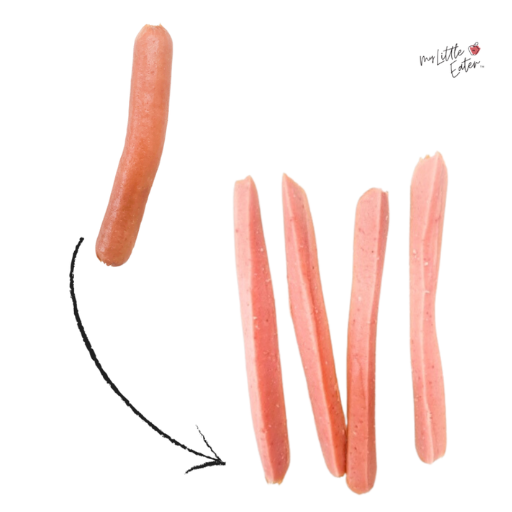
Technique for Cutting Hot Dogs to Mitigate Choking Risks
I would suggest one more method of cutting hot dogs that has been shown to decrease choking risks. The first cut you will do is off the length of the hot dog, making two flat portions of the hot dog. After this, each flat half should be cut into small pieces of approx. Half an inch or less. This significantly reduces the chances of a detachable 'plug' being able to fit into a child's throat as the hot dog is cut down into various smaller pieces, changing its structure and overall size. It is of utmost importance that heeding to this method, along with proper parenting around the time of feeding, is invented for children so that they do not face the risk of choking.Cutting Hot Dogs for Kids: Tips for Smaller Pieces
It is no secret that chopping a hot dog into smaller pieces for small children can have some challenges, and hence, the sociocultural factors and customs surrounding the processes of cutting any food for such children raise some practical concerns that need to be addressed. In fact, the same can be handled with a few basic tips and careful handling that lowers the chances of choking hazards substantially. To approach this problem, I suggest that it is most prudent to first cut the hot dog into long, thin strips. The change in shape makes it highly unlikely that the airway’s diameter will be equivalent to the slice produced. Once they have been longitudinally cut into strips, the next is to cut these into tiny pieces of less than half an inch broadly triangulated edges. This cutting technique reduces chances of suffocation and even chewing to a good extent, which helps toddlers who have yet to develop their chewing competency fully. Instead of using these strategies in isolation, I always emphasize the fact that children should be helped and supervised during the entire mealtime, meaning they eat at a slower rate and do not get off their seats while eating. It can, therefore, be concluded that these steps provide necessary recommendations that, in turn, provide immense improvement to children’s safety whilst eating.The Importance of Cutting Hot Dogs Into Bite-Sized Wedges
I consider it paramount that hot dogs are sliced into small portions in order to bring down the risk of young children choking on them. And this is why each and every step in the process is important:- Maintaining Appropriate Size: The reduction of hot dog sections into smaller parts makes it less likely for a child to wear fit them too tight in their throat. This is necessary because a single chunk can render a child unable to breathe.
- Changing Shape for Safety: Children have difficulties swallowing and completely blocking their airways, mostly when materials are shaped in a wedge, as they will no longer assume the shape of the airways and thus won’t completely cover them.
- Encouraging Proper Chewing: Young children, at times, tend to have partially formed molars, which would make chewing in chunks very difficult, and not being able to chew properly increases the risk of choking. Chewing hotdog in pieces thus assists in reducing the chances of choking.
- Enhancing Supervision: Children tend to choke when the pieces inhaled are too large for their windpipes; therefore, cutting hotdogs into smaller sections assists caregivers in properly monitoring children during breakfast, hence decreasing the chances of an injury.
- Facilitating Effective Expulsion:The wind pipe in children is usually under developed and in case of a piece of food getting stuck it will be much more difficult for them to cough it out.
Why Putting It in the Bun Isn't Enough to Prevent Choking
It is more complicated than just placing a hotdog into a bun in order to suffice the needs of a child. Here are several reasons why:- Size of the Hot Dog: Regardless of the addition of a bun, the child hotdog remains in a size that could still be too large within the child airways. the hot dog cut into quarters on the other agrees with the normal fit as the airway is concerned. Entire hot dog does fit into most children airways which kids could choke on so one does need to watch out.
- Texture and Shape: From my experience, it seems that the shape of the sausage is mostly cylindrical, and once a hot dog is placed in a bun, it does not change the shape by much. This shape is finally the shape of the windpipe, though, only because it fits.
- Chewing Encouragement: With a hot dog inside a bun, children seem to have less of a need to chew their food properly, instead focusing on biting bigger pieces of the hot dog which is surrounded by bread. Without pressure, the bun might just roll to the side, throwing in the possibility of the hotdog being pocketed into the throat.
- Consistency: Due to their softness, buns do in fact negate the urge to first chew the food and swallow rather than choke on it. This hotdog’s outer texture is rather more solid in comparison with the softness of the bread, it in fact can misguide a child into attempting to swallow a large peice instead.
- Partial Distraction: At times, Observing how much of a hot dog is bitten can be more challenging when a bun is present, which may result in less effective supervision.
What to Do If a Child Is Choking on a Hot Dog
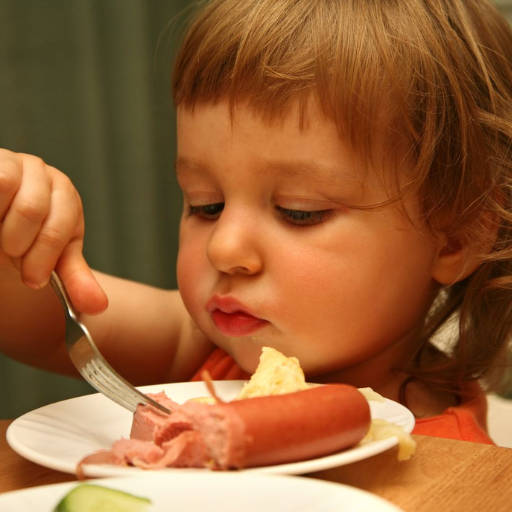 But if a child, imagine a child chokes on a hot dog for whatever reason, the first key aspect that should be maintained is calmness along with speed of action. I, being an industry expert, would recommend the following steps in this case.
But if a child, imagine a child chokes on a hot dog for whatever reason, the first key aspect that should be maintained is calmness along with speed of action. I, being an industry expert, would recommend the following steps in this case.
- Assess the Situation: Starting from the child, as the first safety consideration, determine if the child can speak, cough, or breathe normally. If the child can cough, they should be encouraged to do so as it could help dislodge the obstruction.
- Call for Help: If the child continues to choke, then call emergency services for help as quickly as possible and wait for their assistance.
- Perform Back Blows and Abdominal Thrusts: In case the child does not stop choking, if possible, give the child five back blows between the shoulder blades. More precisely, stand or kneel while delivering five back blows, and when these fail to clear the airway of the child, perform five abdominal thrusts using your fist, placed above the navel.
- Repeat the Process: Continue performing back blows and abdominal thrusts alternatively until the object is expelled from the child’s airway or help is provided.
- Professional Evaluation: After this incident occurs, even if the child is able to breathe without obstruction, seek medical assistance as the child may have suffered an injury to serrated structures in the airway.
Signs That a Child's Airway Is Blocked
I usually receive the question of how to identify that a child has a blocked airway. Identifying the signs early can prove helpful. This is what to look for: In case a child is about to reach out to gasp or air scream due to choking while being unable to do either, it makes it possible for her to breathe through her mouth or not cry at all. Evidence such as the child breathing faster than normal or having to exert more effort to breathe in could also be indicative of a blocked airway. For instance, one particular sign might be that the child begins to hold her throat and starts showing signs of frantic panic. A baby that cannot breathe will also change colors due to lack of oxygen. Thus, her face, literally all parts of it, except her eyes, could turn red or lighter blue. All of these factors indicate that this could have been the right moment to take some action, as failure to do so would further complicate the martial scene and, of course, not ensure the child’s safety.Heimlich Maneuver and Back Blows
Heimlich maneuvering and blowing to the back are life-saving for children who are in danger of choking. For execution of these activities, perform the following actions as suggested below:- Back Blows: You may also consider standing or kneeling behind the child. One hand with chest support should be placed around the child while the other supports the object, helping it come off. You can provide up to five firm strikes with the heel of the opposite palm between the child’s shoulder blades.
- Heimlich Maneuver (Abdominal Thrusts): If back thumps neither loosen nor dislodge the dislodged object, consider abdominal thrusts. Stand behind the child, encircling their waist with the arm. Make a fist with one of your hands and place it above the child’s abdomen. Using the first hand, grab another fist and make abrupt thrusts toward the child’s diaphragm.
When to Seek Medical Assistance During Choking Incidents
The recommendation is to get medical attention during choking incidents if any of the following happens: the child loses consciousness, or there is any bluish coloration of the skin. Suppose the foreign body cannot be removed with the above methods, such as back blows and abdominal thrusts. In that case, it is of paramount importance that the child receives professional medical assistance. In addition, even if the object is ‘coughing up’ out and the child is breathing ‘normal’, the attenders must still go for a medical checkup. This is to avoid any complications with the child while ruling out the chances of a member moving into the lungs. Timely medical attention is equally important in relation to the child’s safety and the overall outcome.What other foods are on the list of foods to avoid for young kids?
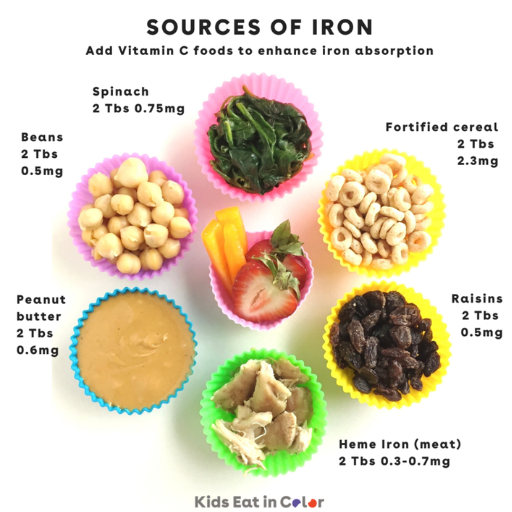 Other caregivers to refrain from handling specific foods that could cause choking, among other hazards, to toddlers. Whole grapes, nuts, popcorn, hard candy, raw carrots, as well as large chunks of meat or cheese are some of the foods that are highlighted as discouraged for consumption. Such foods tend to be quite hard for toddlers to chew and swallow in a safe manner, which increases the danger that their airways may get blocked. Furthermore, it is also best to apply peanut butter in thin layers so the child’s mouth does not get filled with this paste, which could lead to choking. As a rule of thumb, always ensure that you do not serve food that is of inappropriate texture or size unless absolutely necessary for young children, this can be done by cutting the food into tiny pieces which do not pose a risk to the child.
Other caregivers to refrain from handling specific foods that could cause choking, among other hazards, to toddlers. Whole grapes, nuts, popcorn, hard candy, raw carrots, as well as large chunks of meat or cheese are some of the foods that are highlighted as discouraged for consumption. Such foods tend to be quite hard for toddlers to chew and swallow in a safe manner, which increases the danger that their airways may get blocked. Furthermore, it is also best to apply peanut butter in thin layers so the child’s mouth does not get filled with this paste, which could lead to choking. As a rule of thumb, always ensure that you do not serve food that is of inappropriate texture or size unless absolutely necessary for young children, this can be done by cutting the food into tiny pieces which do not pose a risk to the child.
Common Choking Hazards: Grapes, Hard Candy, and More
I have had many discussions with parents of young children on the subject of foods that pose a risk of choking. When introducing some foods, it is necessary to be aware of their potential dangers. Allow me to elaborate on them so you can appreciate the reasons why they can be hazardous:- Grapes: The way grapes are cut comes under question as whole ones especially pose a choking hazard for young children. Such is due to their puter shape and smoothness that can permit the instant blockage of a child’s airway in a case where the grape is swallowed whole. It is recommended that grapes should be served in quarters.
- Hard Candy: It is wise to advise against giving hard cones to children most of the time, especially the young ones. Their tendency to suck on such cones causes them to get sucked in, thus greatly increasing the chances of asphyxiation. Additionally, the act of sucking on the mouth of the one for extensions of the tie may lead an individual to misconceive breathing as inhalation, in which case the koi may choke and cut a person’s breath.
- Nuts: Nuts can be termed as one of the tougher snacks to eat, especially for children. Small in size and round in shape, nuts are surrounded by a comparatively hard shell, making it hard to chew. In regards to how why they pose a choking threat, it is due to the possibility of a child not chewing them well and the nuts traveling to the windpipe. Thus, it is best to either refrain from giving nuts to children under the age of five or serve nut butter.
- Popcorn:Eating popcorn kernels can prove to be a challenge since they seem to stick in one’s airway. Hence, popcorn should be served to children once they reach an age that enables them to chew more efficiently.
- Raw Carrots:It might be tricky for toddlers to effectively chew raw carrots hence they pose a risk of going down the throat whilst being a piece. It is preferable to either boil the carrots to a soft texture or chop them into small and thin sticks.
Why Whole Grapes and Hot Dogs Pose a Serious Choking Risk
It’s pertinent to elucidate the rationale underlying the classification of some foods, such as whole grapes and hot dogs, as substantial choking hazards for toddlers. Here’s a breakdown in simple terms:- Size and Shape: The size of husked grapes and portions of hot dogs is equal to that of the windpipe in a child. If these items are consumed without thorough chewing, they could potentially end up being inhaled and choking the child. This becomes dangerous as kids have not yet developed the skill to chew properly.
- Texture: The body composition of hot dogs is smooth thereby making them easy to swallow and making it difficult for the person to chew or fragment it. The same scenario occurs with grapes since their shape is circular and firm; thus, a child may end up swallowing them without chewing completely and they will get lodged in the throat. With these characteristics, the chance of a person swallowing and choking increases substantially.
- Chewing Capability: Children who age anywhere between 2 and 5 years old do not, mostly, possess all the molars required for chewing food properly. Children also tend to swallow grapes or hot dogs without trying to chew them properly, which results in eating the food without proper fragmentation, leading to the food being lodged inside the esophagus.
- Handling and Supervision: Kids are also poor in handling foods and have the tendency to chew on the food poorly, this also happens because children are ever distracted during mealtimes. Ensuring good supervision during meals is of utmost importance and the children should also be encouraged to chew their food properly before swallowing it.
Advice from Pediatricians on Food Choking Episodes
One of the precluding measures for the choking hazard is always the food cutting, followed by supervision. Even though pediatricians recommend the above, which is absolutely key to ensure, supervision during meals is also a vital necessity, and indeed providing the security of a place where the children can eat focused. In addition to the lack of supervision, in the case of children, focus itself is the problem. To address the rest of the matters in the case where all matters above fail and still the child is choking himself, initiatives need to be taken calmly, such as the extraction of the obstructing items using puffs or thrusts, followed by parental assistance properly and gently performing the first aid while looking for professional assistance. Integrating parents and caretakers in such proposals is also being advocated by pediatricians so that those trained have the basic life-crying skills to use when scenarios like the above do present themselves.How to Teach Kids to Eat a Hot Dog Safely
 Being an industry expert, teaching children to eat a hot dog effectively requires several important steps. The first step is to always cut a hot dog into small thin slices. A hot dog is to be cut almost in a crosswise manner into halves or quarters to lessen the choking risk. The children should also be involved in this procedure, and the reasons for these safety aspects should be explained to them so that they can understand and cooperate willingly. Try to make them take their time chewing each piece slowly instead of swallowing it immediately, on the premise that they do not eat too fast. A calm and quiet setting during mealtime minimizes undue stimulation and ensures that the children pay more attention to eating and doing so without any hazards. Besides, the elderly should always be around the children when they are eating to eliminate any risk of choking.
Being an industry expert, teaching children to eat a hot dog effectively requires several important steps. The first step is to always cut a hot dog into small thin slices. A hot dog is to be cut almost in a crosswise manner into halves or quarters to lessen the choking risk. The children should also be involved in this procedure, and the reasons for these safety aspects should be explained to them so that they can understand and cooperate willingly. Try to make them take their time chewing each piece slowly instead of swallowing it immediately, on the premise that they do not eat too fast. A calm and quiet setting during mealtime minimizes undue stimulation and ensures that the children pay more attention to eating and doing so without any hazards. Besides, the elderly should always be around the children when they are eating to eliminate any risk of choking.
Guidelines for Older Kids on Chewing and Swallowing
I’d like to offer ten practical and easy-to-follow guidelines to assist older children to enhance their chewing and swallowing movements:- Understand the Importance of Chewing: I have underscored the significance of engaging in chewing, in regard to the fact of it requiring breaking down food into smaller, digestible portions thus stating that it reduces the risks of choking as well as makes it easier to digest.
- Take Small Bites: Advising kids to bite off less food, especially meat and other tough-to-chew foods, aids in the ease of its intake as the kids are able to chew smaller portions of food.
- Avoid Distractions: With the current increase in the level of binge watching and eating that has been observed, it should not come as a surprise that the two combined offer a reckless eating style thus raising safety concerns in a child as they might forget to chew completely, therefore, mealtime must be seen as an isolated event.
- Practice Proper Chewing Techniques: Children tend to not maintain a decent pace when eating due to anxiety or stress of any other nature, therefore children should be encouraged to maintain a steady pace while not eating in a rushed manner so as to promote eating without any risks.
- Relax While Eating: Kids should be taught how to identify food that they want to swallow but isn't sliding down; in such cases, they should be told to refrain from swallowing and instead go through an appropriate chewing session.
How Parents Can Monitor and Reduce the Risk of Choking
I understand the vital contribution parents make to the safety of their children while eating. Below are some ways to supervise and reduce the likelihood of choking:- Stay Vigilant During Meals: A child who is eating is supposed to be given a great deal of supervision. This enables a parent to intervene immediately and assist the child who is apparently choking or having problems with eating.
- Proper Food Preparation:Whenever possible, always process food by making it into smaller sizes which the child can easily handle and masticate. For example, cut grapes and hot dogs into four portions and four small pieces respectively.
- Teach Safe Eating Habits: Promote Appropriate Eating Practices Most parents are elated to see their children properly start using utensils, one of the key practices this requires however is proper chewing of food before swallowing. In some cases, it may be advisable to demonstrate such proper techniques. For instance, the use of molars is supposed to grind food.
- Create a Focused Eating Environment: Turn off the television and other gadgets during eating. Best practices and environment are essential in making the child eat slowly and carefully
- Model Good Behavior: Exemplify Appropriate Behavior Patterns It’s common for children to copy what adults do, which is why modeling safe eating behavior and reinforcing it is effective.
- Emergency Preparedness: Preparedness To Choking Hazard Showing how to properly dress a first-aid kit is suggested, so that you and other caregivers will know where to look in case of an emergency. Knowing how to do that is concerning.
Developing Safe Eating Habits in Children Younger Than 4
Suggesting safety practices in eating for children under four requires the focus to be on certain targeted strategies that are suitable for the child’s age. As much as possible, try to give small-cut soft food to the child to reduce the risks of choking. Promote the practice of staying seated and attentive during meals so as to promote healthy eating practices. Interact with the children and monitor them closely, showing them the importance of eating slowly and thoroughly. There should be an early start to lessons about safe eating practices as this would ensure a base for healthy eating practices throughout life.Reference
- Choking in the pediatric population - This article discusses the frequency of choking incidents in children, highlighting hot dogs as a significant risk.
- Pediatric exposure to choking hazards is associated with parental knowledge of choking hazards - This study examines the relationship between parental awareness and the exposure of children to known choking hazards like hot dogs.
- Prevention of choking among children - This publication outlines the characteristics of foods that pose serious choking risks, including hot dogs.
Frequently Asked Questions (FAQs)
Q: Why are hot dogs considered a choking hazard for young kids?
A: Hot dogs are considered a choking hazard because their shape and size make them the perfect size to get lodged in a child’s airway. This risk is particularly high for toddlers and infants, as they are still developing their chewing and swallowing skills. Dr. Tanya Altmann and other pediatricians often mention that a hot dog really looks kind of like a thick quarter, which can easily block an infant or toddler's airway.Q: What do pediatricians recommend about toddlers eating hot dogs?
A: Pediatricians, including Dr. Tanya Altmann, recommend that parents avoid giving young children whole hot dogs. If serving hot dogs, they should be cut into very small pieces to reduce the risk of choking. Many experts suggest cutting them lengthwise and then into smaller pieces to minimize the hazard.Q: At what age is it safer for children to start eating hot dogs?
A: While there is no specific age, many experts, including those from the AAP, suggest avoiding whole hot dogs for children under 4 years old. Around age 4, children typically have better chewing and swallowing capabilities, but caution is still advised.Q: What alternatives are better than a hot dog for young children?
A: Alternatives that are much better than a hot dog for young children include softer, more easily chewable foods such as shredded chicken, small pieces of cooked vegetables, or sliced fruits. These options are less likely to cause choking.Q: Does Johns Hopkins Medicine provide guidelines on foods that are high-risk for choking?
A: Yes, Johns Hopkins Medicine and other health organizations often provide lists of high-risk foods, which typically include hot dogs, nuts, grapes, and popcorn. Parents are advised to be cautious with these foods to prevent choking incidents.Q: Are there any formal recommendations from the AAP regarding hot dogs?
A: The AAP (American Academy of Pediatrics) recommends that foods like hot dogs should be cut into small, manageable pieces for children and warns about the dangers of giving them to infants and toddlers whole. They often top the lists of foods to avoid giving young children due to their potential to cause choking.Q: How prevalent are choking incidents involving hot dogs in the U.S.?
A: Choking incidents involving hot dogs are unfortunately common in the U.S., especially during celebrations like the Fourth of July alone, when hot dogs are frequently consumed. This highlights the importance of being vigilant and following safety guidelines when serving hot dogs to young children.Q: What should parents do if they suspect their child is choking on a hot dog?
A: Parents should immediately try to dislodge the food by following first aid procedures for choking. If unsuccessful, they should seek emergency medical help. It's crucial to remain calm and act quickly in such situations.Q: Have there been any calls for warning labels on hot dogs?
A: Yes, some health advocates have called for warning labels on hot dogs and other high-risk foods to inform parents of the choking hazards they pose to young children. This initiative aims to increase awareness and prevent incidents.Q: What do experts from the Ohio State University College of Medicine say about the design of hot dogs?
A: Experts from the Ohio State University College of Medicine have noted that the shape of a hot dog is almost designed to be the perfect plug for a child's airway, emphasizing the need for caution when serving hot dogs to young children.1661






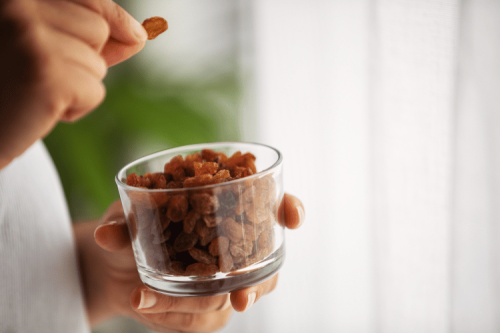

 Login with Google
Login with Google Login with Facebook
Login with Facebook